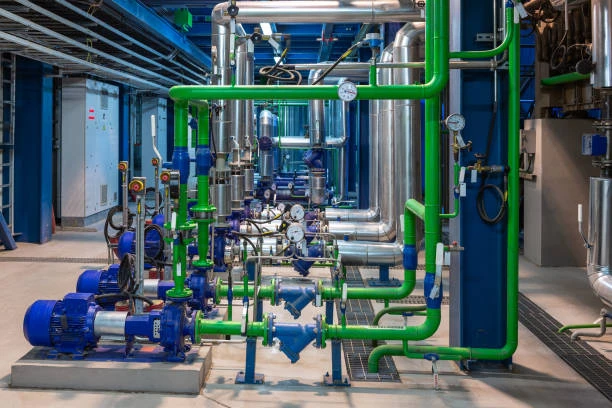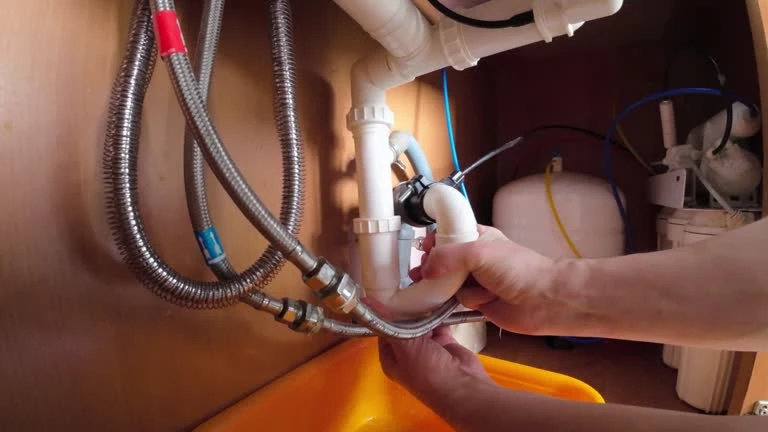1. Introduction
Pressure safety valves (PSVs) serve as critical fail-safes in countless pressurized systems. These specialized valves automatically activate when internal pressures exceed predetermined limits, preventing catastrophic equipment failures. You’ll find PSVs protecting everything from industrial boilers and chemical processing plants to residential water heaters and HVAC systems. The fundamental principle remains consistent across applications: immediate pressure relief when dangerous conditions arise. Unlike manual valves, PSVs operate autonomously through precision engineering, making them indispensable for system safety. Their importance spans multiple industries, with strict regulations governing their installation and maintenance to ensure reliable performance when needed most.
2. How a Pressure Safety Valve Works
The operation of a pressure safety valve relies on carefully calibrated mechanical components working in perfect harmony. Under normal operating conditions, system pressure exerts force against the valve disc, while the spring mechanism maintains a counterforce to keep the valve sealed. When pressure surpasses the set point – typically 10-25% above working pressure – the upward force overcomes the spring tension. This causes the disc to lift from its seat, creating an immediate pathway for excess pressure to escape. The escaping media flows through the discharge nozzle, often directed to a safe containment area. As pressure normalizes, the spring forces the disc back into position, resealing the system. This entire cycle occurs in milliseconds, with high-quality valves capable of handling rapid pressure spikes without chatter or premature wear.
3. Key Components of a Pressure Safety Valve
Every pressure safety valve contains several essential components that determine its performance characteristics. The valve body, typically constructed from durable materials like carbon steel or brass, houses all internal parts and provides connection points to the system. Inside, the disc (or poppet) forms the primary sealing surface against the nozzle seat. The spring, precisely calibrated to specific pressure ratings, provides the closing force. Modern designs often incorporate a blowdown ring to control the reseating pressure differential. The bonnet protects internal mechanisms from environmental factors while allowing for adjustment access. Many industrial PSVs feature auxiliary components like lifting levers for manual testing, or caps and locks to prevent unauthorized tampering. Each element must meet exacting material specifications to ensure proper function under varying temperature and pressure conditions.
4. Common Applications of Pressure Safety Valves
Pressure safety valves find application in virtually every industry dealing with pressurized systems. In power generation, they protect steam boilers from overpressure conditions that could lead to catastrophic explosions. The oil and gas industry relies on PSVs for wellheads, pipelines, and refining equipment where pressure fluctuations are common. Chemical processing plants use specialized corrosion-resistant valves to handle volatile substances. Even everyday applications depend on these safety devices – home water heaters incorporate temperature and pressure relief valves (TPRVs) to prevent tank ruptures. Commercial refrigeration systems, hydraulic power units, and even spacecraft propulsion systems all incorporate some form of pressure relief mechanism. The specific valve design varies dramatically based on media type, pressure range, and required flow capacity, but the fundamental protective purpose remains constant across all applications.
5. Why You Need a Pressure Safety Valve
The consequences of operating pressurized systems without proper safety valves can be devastating. Uncontrolled pressure buildup can cause vessel ruptures, leading to dangerous projectiles, toxic releases, or fires. A single overpressure event in an industrial setting can cause millions in equipment damage and potential loss of life. Even in residential settings, a failed water heater valve can flood a home with hundreds of gallons of scalding water. Beyond safety concerns, regulatory bodies like OSHA and ASME mandate PSV installation in most pressurized systems. Insurance providers often require certified valves and regular inspections for coverage eligibility. Properly functioning PSVs also protect equipment from cumulative damage caused by repeated pressure spikes, extending asset lifespan and reducing maintenance costs. The relatively small investment in quality pressure relief devices pales in comparison to the risks of operating without them.
6. Signs Your Pressure Safety Valve Needs Attention
Recognizing warning signs of PSV malfunction can prevent dangerous situations. Frequent weeping or minor leakage often indicates beginning seal degradation. Rust or corrosion on external surfaces suggests internal components may be compromised. Valves that fail to reseat properly after activation may have damaged discs or worn springs. Unusual noises like chattering or buzzing during operation signal improper flow dynamics. In industrial settings, monitoring systems may detect abnormal opening frequencies or duration. Testing mechanisms should move freely – stiff or stuck levers require immediate attention. Mineral deposits or debris accumulation around the discharge can interfere with proper operation. Any valve that activates at incorrect pressures needs recalibration or replacement. Document all maintenance activities and establish regular inspection intervals based on service conditions and manufacturer recommendations.
7. How to Maintain a Pressure Safety Valve
Effective PSV maintenance requires a systematic approach tailored to the specific application. Start with regular visual inspections checking for leaks, corrosion, or physical damage. Most manufacturers recommend periodic bench testing to verify set pressure and reseating characteristics. For critical applications, ultrasonic testing can detect internal component wear before failures occur. Always follow proper lockout/tagout procedures before performing any maintenance. Cleaning procedures vary by media type – steam valves may need descaling while chemical service valves require specialized cleaning agents. Never adjust spring tension beyond manufacturer specifications, and always use calibrated testing equipment. Replacement intervals depend on service conditions – continuous cyclic service may require annual replacement while standby valves might last several years. Maintain detailed records of all tests, adjustments, and replacements for compliance and troubleshooting purposes. Consider implementing a digital management system for large valve inventories.
8. Choosing the Right Pressure Safety Valve
Selecting the appropriate PSV requires careful consideration of multiple factors. First determine the required set pressure and allowable overpressure for your application. Calculate the necessary relieving capacity based on potential overpressure scenarios. Media characteristics (steam, gas, liquid, corrosive substances) dictate material selection – bronze for water service, stainless steel for corrosive chemicals. Consider temperature ranges as extreme heat or cold affect material performance. Connection types (flanged, threaded, welded) must match existing piping. Industry certifications (ASME Section I or VIII, API, CE) ensure compliance with relevant standards. For critical services, consider features like bellows seals for backpressure protection or pilot-operated designs for precise control. Always consult with qualified engineers or valve specialists when designing safety systems – improper selection can have grave consequences. Factor in maintenance requirements and availability of spare parts when making long-term valve selections.
IFAN Products international standards
IFAN products strictly adhere to a comprehensive range of international standards, encompassing ISO 15874, EN 15874, ASTM F2389, DIN 8077/8078, GB/T 18742, NBR 15884, ISO 15494, EN ISO 15494, GB/T 19472, NBR 15494, ASTM 2846 (501), DIN 8079/8080 (502), ASTM F441/F441M SCH80 (503), DIN (504), DIN (505), GB/T 18993, AS/NZS 1477, CSA B137.6, NSF/ANSI 14, TIS 17-2532/1131-2535, BS 3505, BS 4346 (801), ASTM D1785 SCH40 (802), ASTM D1785 SCH80 (803), DIN (804), GB (805), GB (806), GB(901), DWV(902), ASTM D2665 (903), along with ASTM D2241, D2665, D2729, and F441/F441M series, ISO 1452, EN ISO 1452, DIN 8061/8062, GB/T 10002, AS/NZS 1477, JIS K6741, CSA B137.3, and other national and industry norms.
Connect
IFAN is a Chinese manufacturer of plastic pipes, fittings and valves with 30 years of experience. If you are interest in IFAN copper fittings, copper valves, plastic pipes and fittings, please contact us. IFAN offers you a variety of standard pipes to meet your specific needs. Click below to learn more about IFAN’s wide range of affordable and cost-effective valve products and piping system related products.
We will reply your email or fax within 24 hours.
You can call us at any time if there is any question on our production.
For more information,pls visit our webside https://waterpipefitting.com/
Pls Mailto: [email protected]
Whatsapp: +86 15088288323














Recent Comments